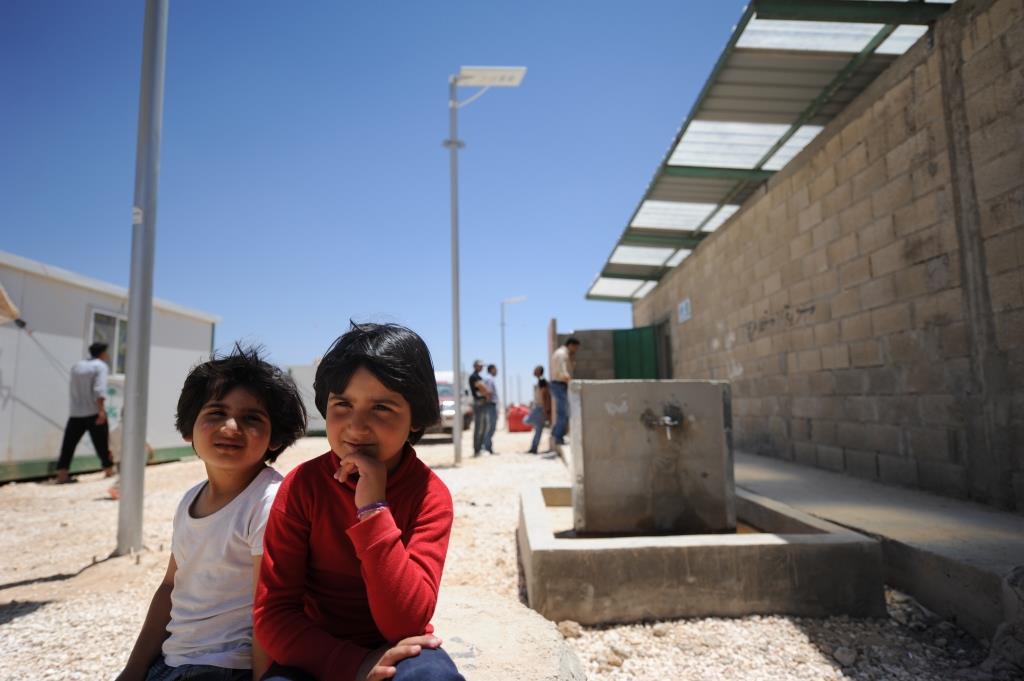How solar power is helping refugees

Look closely at the photo above. Notice anything different about those lampposts? In fact, the lights in the background of the photo—which was taken in Jordan’s Zaatari refugee camp earlier this month—are actually solar-powered lamps installed by Oxfam to help improve residents’ safety.
Oxfam engineers installed the lamps outside of sanitation facilities (which contain showers, toilets, and laundry facilities for camp residents), using this alternative source of energy to make it safer for families and kids to use these essential facilities at night.
“We have solar panels lighting the toilet areas inside and out,” said Oxfam’s Karl Schembri, who visited the camp this month and took the photos above and below. “[They] are completely solar powered and don’t need to be connected to the grid.
The [Oxfam] engineers have to leave the camp each day at a certain hour, but I recently had the privilege to stay overnight. I could see these lights are lighting up entire streets, so people feel safe to go to the toilet at night. When I showed my pictures to the engineers, it was the first time they could see the effect at night. They were so happy and proud.”

The solar-powered lights are just one small part of Oxfam’s efforts to help families displaced by the conflict in Syria. More than 100,000 refugees—many of whom are kids—are now sheltering in Zaatari, Jordan’s largest refugee camp. Oxfam engineers have built emergency latrines for 20,000 camp residents, as well as more permanent blocks of sanitation facilities to benefit 8,000 people.
Meanwhile, more people are arriving in Zaatari every day, and Oxfam’s efforts to provide 650,000 people with humanitarian aid in Jordan, Lebanon, and Syria are severely underfunded. Your donation will help families access safe water, latrines, shelter, and critical supplies. Please donate to the Syrian Refugee Crisis Fund to help us meet the most critical needs in this escalating emergency.
